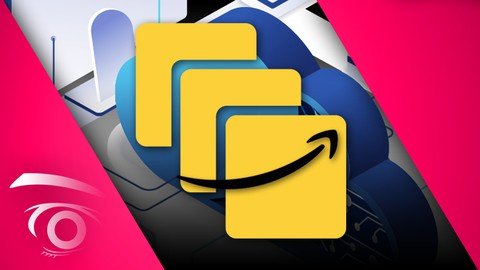
Published 3/2023
MP4 | Video: h264, 1280×720 | Audio: AAC, 44.1 KHz
Language: English | Size: 8.63 GB | Duration: 14h 20m
AWS Foundations | IAM | Amazon EC2 | Load Balancing | Auto-Scaling Groups | Route 53 | PHP | MySQL | App Deployment
What you’ll learn
Understanding of cloud computing and Amazon Web Services (AWS)
Proficiency in creating and configuring AWS accounts and environments
Knowledge of AWS pricing and billing models
Mastery of Identity and Access Management (IAM) policies and permissions
Ability to launch and configure Elastic Compute Cloud (EC2) instances
Familiarity with security groups, key pairs, and Elastic IP addresses
Competency in using AWS storage services, such as Elastic Block Store (EBS) and Simple Storage Service (S3)
Expertise in creating and using Elastic Load Balancers (ELB) and Auto Scaling Groups (ASG) for load balancing and scaling web applications
Knowledge of DNS management using Route 53
Proficiency in PHP programming language fundamentals
Ability to interact with databases using PHP and execute SQL queries
Understanding of PHP security best practices, including SQL injection prevention and user authentication
Ability to design and implement a database schema for a web application
Mastery of PHP scripting to interact with a database and implement user authentication using sessions and cookies
Competency in creating a simple blog interface using HTML and CSS and protecting the blog content using PHP authentication.
Students will gain practical experience in creating and deploying a member-only blog with user authentication using PHP and MySQL on AWS.
Requirements
Basic Computer Skills
Description
This course provides a comprehensive introduction to cloud computing using Amazon Web Services (AWS) and web application development using PHP and MySQL. Students will gain an overview of AWS and its core services, including EC2 and storage, before delving into IAM: Identity and Access Management, which enables control of access to AWS resources. Students also learn how to launch EC2 instances, store data in AWS, and use Elastic Load Balancers (ELB), Auto Scaling Groups (ASG), and Route 53 to create a highly available and scalable web application.The course begins with an explanation of AWS, its benefits, and services offered, with a focus on creating an AWS account, configuring an AWS environment, and understanding billing and pricing models. Students then learn about IAM policies, permissions, and Multi-Factor Authentication (MFA) to manage users, groups, and roles for AWS resource access control.The course proceeds to cover AWS compute service, EC2, which allows virtual servers in the cloud, and provides flexibility and scalability for web applications. The course teaches how to create an EC2 instance, connect to it using SSH, and configure it for web applications, as well as information about security groups, key pairs, and Elastic IP addresses. Additionally, students learn about AWS storage, including Amazon Elastic Block Store (EBS) and Amazon Simple Storage Service (S3), and how to use them to store and manage data.The course then covers ELB, ASG, and Route 53, which provide load balancing, automatic scaling, and DNS management, respectively. Students learn how to use ELB to distribute incoming traffic to multiple EC2 instances, ensuring high availability and fault tolerance. They will also learn how to use ASG to add or remove EC2 instances based on demand and use Route 53 to manage DNS records for their web application.The next section of the course teaches the fundamentals of PHP and MySQL, including variables, control structures, loops, functions, and how to interact with databases using PHP. Students learn how to create and execute queries, fetch results, and handle errors, as well as PHP security best practices, including SQL injection prevention and user authentication.Finally, students will apply what they have learned by creating a member-only blog with user authentication using PHP and MySQL. They will learn how to design a database schema, create PHP scripts to interact with the database, and implement user authentication using sessions and cookies. They will also learn how to create a simple blog interface using HTML and CSS and how to protect the blog content using PHP authentication.In summary, this course provides students with a solid foundation in AWS, web application development using PHP and MySQL, and the skills necessary to design, develop, and deploy web applications in the cloud using AWS. By the end of the course, students will understand AWS core services, IAM, EC2, storage, and load balancing and be able to use them to create highly available and scalable web applications.
Password/解压密码www.tbtos.com
转载请注明:0daytown » Cloud-Powered Web App Development With Aws And Php